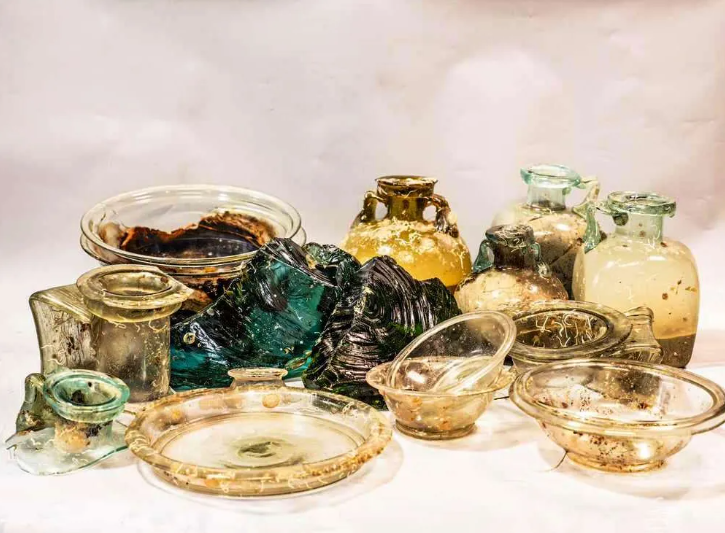This month articles about looted artifacts in Israel, royal tombs in Cyprus, and a shipwreck near Italy with an exciting cargo dominated the news. Here are the top three reports in biblical archaeology for July 2023.
3. Shipwreck with Perfectly-Preserved Roman Glassware Discovered off the Coast of Italy

Marine archaeologists have discovered a 2,000-year-old shipwreck in the waters between the Cap Corso peninsula of France and Italy’s Capraia island and have recovered thousands of pieces of Roman glassware from it. The Roman vessel lies at a depth of 1,148 feet and was first discovered in 2012. This summer, the team from Fance and Italy used two remotely operated vehicles (ROV’s) to scan the wreck and recover artifacts. A large collection of perfectly-preserved glass vessels, including cups, bowls, bottles, and plates was successfully brought to the surface, as well as blocks of raw glass. Archaeologists believe the ship sunk sometime at the end of the first century or beginning of the second century AD. They hope to learn more about maritime trade in the Mediterranean region 2000 years ago, as well as better understand the production of Roman glassware by studying the artifacts.
NEWS LINK: https://www.smithsonianmag.com/smart-news/glassware-2000-year-old-roman-shipwreck-180982615/
2. Thousands of Looted Artifacts Turned In During Amnesty Period

Hundreds of Israelis recently turned in thousands of ancient artifacts during the temporary amnesty period offered by the Israel Antiquities Authority (IAA). These had been looted from sites in Israel over the years and illegally kept in their homes or private collections. Some of the larger items included stone capitals, a sarcophagus, an ornate ossuary with rosettes, and massive Roman ballista stones that were larger than basketballs. Many smaller items were turned in as well, including tools, weapons, pottery vessels, figurines, scarabs, seals bullae, and coins. Unfortunately, since these antiquities were looted from ancient sites, the archaeological context is unknown. Still, the IAA will document and preserve the artifacts, and hopefully, some of them will be studied and displayed.
1. Royal Tombs from the Bronze Age Discovered in Cyprus

Two tombs discovered at the ancient city of Dromolaxia Vizatzia near Hala Sultan Tekke in Cyprus are being hailed as being among the richest ever found in the region of the Mediterranean. The tombs date to the Late Bronze Age (ca. 1500 –1200 BC) and contained more than 500 complete artifacts made from precious metals, gemstones, and ivory, as well as stunning ceramic vessels. An archaeological team from the University of Gothenburg located the tombs using magnetometers, which can identify objects up to two meters underground. Given the lavishness of the grave goods, the lead archaeologist, Peter Fischer, believes these were royal tombs.
NEWS LINK: https://greekreporter.com/2023/07/09/bronze-age-royal-tombs-cyprus/
Stay Up-To-Date
Get the latest BREAKING NEWS in biblical archaeology each week here: https://biblearchaeology.org/current-events-list

